The standout moment for me was harvest 2016 which was bad for blackgrass in our area. We had a field in a first milling wheat crop that year, and we harvested it at about three and a half tons to the hectare where obviously we should be up nine, 10t on our heavy clay soils. That was a point where we realised, we had to make some serious, serious changes!
Location: Gloucestershire
Crops Grown: Winter wheat, spring wheat, winter hybrid rye, oilseed rape, spring linseed, salad onions and vining peas
Land managed: 800 hectares
H.A Day & Sons farms around 2000 acres from Greet Farm, Cheltenham, Glos. In the years up until 2016, the blackgrass problem across the 1600 acres of arable crops grown by the business was steadily getting worse. “We’ve changed a lot of the things we do on the farm in the past five or six years, since my cousins and I returned to the family farm.” James states.
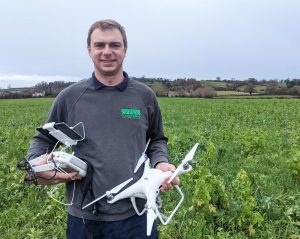
“The cropping at that time was predominantly winter sown wheat and oilseed rape with the odd field of spring beans. We weren’t ploughing, but I guess ‘deep one-pass’ is probably the best term to describe our cultivations strategy at the time. We had a big Sumo cultivator followed with a separate pass with a Simba culti-press. The legs were set at eight, 10 inches, and we were stirring the soil up over this whole depth. Basically, as far as blackgrass control was concerned, we weren’t getting anywhere! We were burying some seed, but also bringing up a huge amount from previous years.”
“Every viable blackgrass seed that we allowed to germinate could potentially produce a plant with many, many tillers and thousands of seed per head. It is such a prolific weed!
Following the disastrous wheat harvest in 2016 a decision was taken at H.A Day & Sons that something had to be done to tackle the blackgrass scourge.
James Wilson continues, “I’m an engineer by trade so perhaps I came at the problem from a slightly different angle, but all the family was on board with the idea that we had to do something different. The precision farming and direct drilling, I guess we now call it regenerative farming, approach that we ended up going down, seemed to be the logical thing to try.”
“So, we invested in a direct drill, and the big cultivator and the Quadtrac were sold, which was a financial improvement, on its own! We also at that time introduced more spring cropping, with spring wheat coming in to replace a second winter sown wheat in our rotation. Spring cropping allowed us to bring cover crops in too, and we now aim to have a cover crop in ahead of all spring crops and even bring in sheep from a neighbour to graze if conditions are right.”
“All of these changes have been good for the soil and in the fight against blackgrass however we have also had to look at how we utilise precision technology to really win the war.”
James states that the business farms over a variety of soil types, from Cotswold Brash up on the hill, lighter soils further down and then what he describes as “really, really heavy clay” in the Evesham Vale. “In the past there was a brick works at the end of one block of ground, so that tells you all you need to know about the soil there!”
“Our initial steps into precision farming were through variable rate drilling as we thought that was ideal for crop establishment across the range of soils. However, what we quickly found was that we had a layer of information missing, and this was in mapping the blackgrass predominance. It was no good varying seed rate based on soil type and then finding that blackgrass would take over certain patches regardless. So, for a while, despite wanting to make the most of precision technology, blackgrass actually drove us away from it and went back to blanket rate drilling.”
James and his family had also been utilising sprayer control technology to target blackgrass areas within fields, however this was proving difficult to implement in practice as there was no way of telling the sprayer where the blackgrass was present, again it came down to a need for mapping.
“I started to look for potential suppliers of mapping and precision tech who could help us to solve the blackgrass problem. Having looked at and trying numerous packages, most of the options seemed very expensive and like they wouldn’t really do what we were trying to achieve. It was through an online forum that I found Jim from SoilEssentials and from an initial chat it became clear that they were very keen to work out a solution for me and tailor their KORE software to do what I needed.”
James states that there are now four key ingredients in his strategy for chemical control of blackgrass, a drone, the KORE mapping technology from SoilEssentials, his variable rate sprayer and his own expertise.
“I bought a DJI Phantom 4 pro Drone, and I use it to take aerial images over the fields.”
“The next stage is actually where the human eye and farming expertise come in. A map image from the drone is uploaded into my SoilEssentials KORE package and I then scrutinise it to identify the blackgrass areas and use the drawing tool to highlight them both visually and electronically as areas to be targeted by the sprayer.”
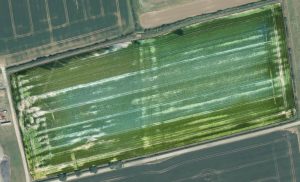
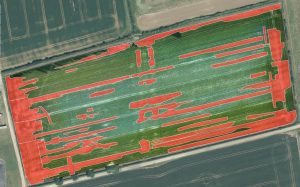
“An example from our 2020 rotation was a winter wheat crop sown into a very heavy clay field. The ground lay so wet for so long over winter that come the spring there was huge variability in the establishment of the wheat, bare patches, and thin patches alongside some very good areas of crop. And the thin patches just wanted to fill with blackgrass! When faced with a situation like that, its impossible to say, ‘if we just spray that corner off, or that 24m strip off its job done’, this is where the drone and KORE software come in, giving the ability to freehand draw the irregularly shaped target areas onto the map which is then uploaded to the sprayer control box.”
“In that field, where we did have a crop, it was a very good one and we were able to utilise the tech to get the most from it all the way through to harvest. Without this technology, it would have been a case of either spraying the whole field off, losing the whole thing because of the level of blackgrass, or persevering with the whole field and dealing with all the extra blackgrass seed added into the soil for the next however many years.”
“It was fantastic to be able to use the KORE mapping technology to have the best of both worlds – get rid of the blackgrass and save the wheat. In this particular example we saved 66% of the crop. We can also look at the fact that we didn’t use any further inputs on 33% of the field area – the treated blackgrass patches. This was done by flipping/reversing the map, so the sprayer applied to areas of crop but ignored the blackgrass patches.”
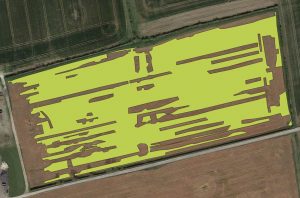
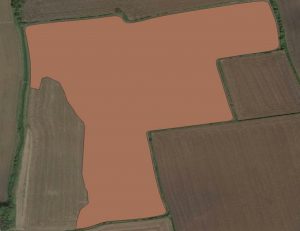
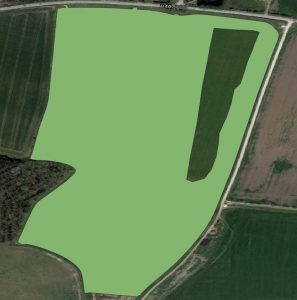
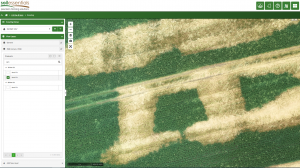
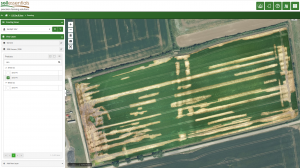
Hear James’ story on the LATEST EPISODE of the OnFARM – Food, Agriculture and Rural Matters Podcast for free at: https://pod.fo/e/117d3d










